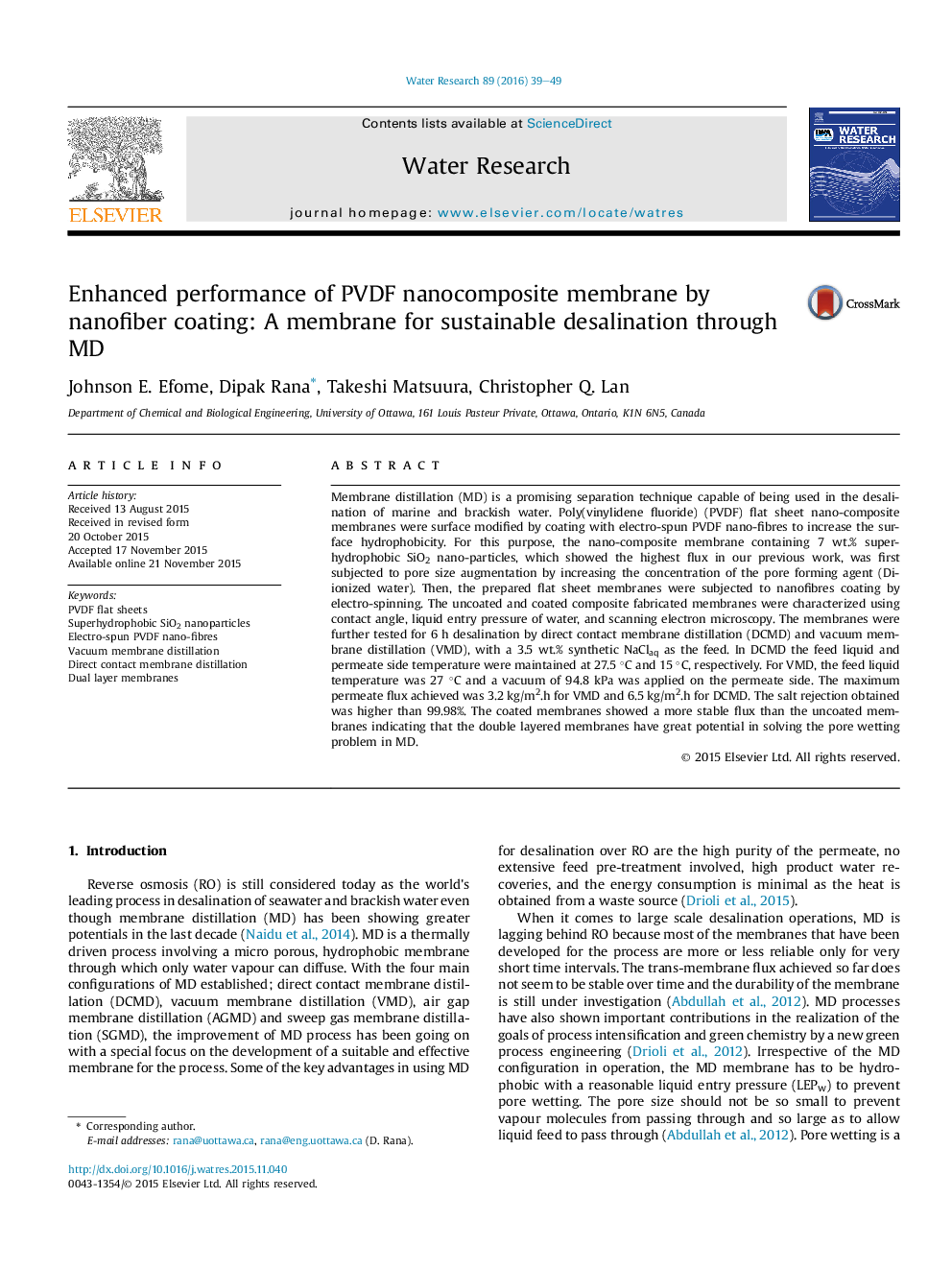| کد مقاله | کد نشریه | سال انتشار | مقاله انگلیسی | نسخه تمام متن |
|---|---|---|---|---|
| 4481020 | 1623079 | 2016 | 11 صفحه PDF | دانلود رایگان |

• PVDF/SiO2 nano-composite membranes were prepared by phase inversion.
• PVDF nano-fibres were electro-spun on the nano-composite membrane to form a dual layer membrane.
• The dual layer membrane showed increased LEPw and contact angle.
• The double layer membrane presented high tendencies to prevent pore wetting.
• The DCMD flux was greater than the VMD flux for desalination using the dual layer membrane.
Membrane distillation (MD) is a promising separation technique capable of being used in the desalination of marine and brackish water. Poly(vinylidene fluoride) (PVDF) flat sheet nano-composite membranes were surface modified by coating with electro-spun PVDF nano-fibres to increase the surface hydrophobicity. For this purpose, the nano-composite membrane containing 7 wt.% superhydrophobic SiO2 nano-particles, which showed the highest flux in our previous work, was first subjected to pore size augmentation by increasing the concentration of the pore forming agent (Di-ionized water). Then, the prepared flat sheet membranes were subjected to nanofibres coating by electro-spinning. The uncoated and coated composite fabricated membranes were characterized using contact angle, liquid entry pressure of water, and scanning electron microscopy. The membranes were further tested for 6 h desalination by direct contact membrane distillation (DCMD) and vacuum membrane distillation (VMD), with a 3.5 wt.% synthetic NaClaq as the feed. In DCMD the feed liquid and permeate side temperature were maintained at 27.5 °C and 15 °C, respectively. For VMD, the feed liquid temperature was 27 °C and a vacuum of 94.8 kPa was applied on the permeate side. The maximum permeate flux achieved was 3.2 kg/m2.h for VMD and 6.5 kg/m2.h for DCMD. The salt rejection obtained was higher than 99.98%. The coated membranes showed a more stable flux than the uncoated membranes indicating that the double layered membranes have great potential in solving the pore wetting problem in MD.
Figure optionsDownload high-quality image (255 K)Download as PowerPoint slide
Journal: Water Research - Volume 89, 1 February 2016, Pages 39–49